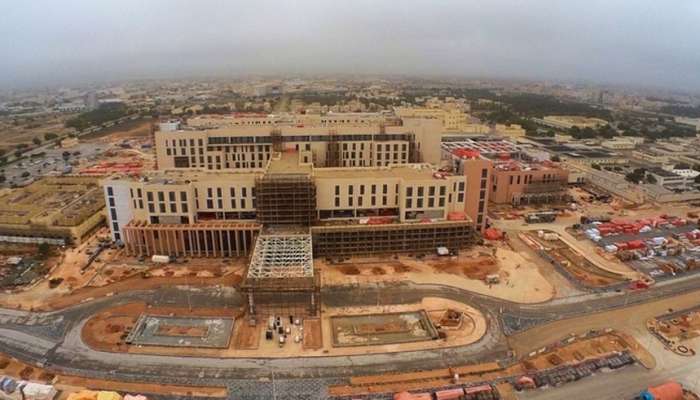
Salalah: The Dhofar Governorate is making substantial progress in executing critical healthcare infrastructure projects designed to enhance medical services and expand healthcare accessibility for both citizens and residents.
These developments form part of Oman's comprehensive strategy to modernize its healthcare sector and strengthen its foundational infrastructure in alignment with national development goals and Oman Vision 2040.
Dr. Hani Ahmed Al Qadi, Director General of Health Services in Dhofar Governorate, highlighted the Sultan Qaboos Hospital project in Salalah as the flagship initiative among current developments, reporting 72% completion of the RO 138 million facility.
In a statement to Oman News Agency (ONA), Dr. Al Qadi elaborated on the hospital's specifications: "The 100,000-square-meter medical complex features a seven-story structure with a 700-bed capacity distributed across 3,238 rooms. The facility will offer specialized departments including emergency medicine, medical imaging, chemotherapy, dialysis, burn treatment, and rehabilitation services. Additionally, it will house multiple intensive care units catering to adults, pediatric patients, and neonates, complemented by comprehensive educational and support facilities."
"The new hospital represents a transformative advancement for healthcare delivery in Dhofar," Dr. Al Qadi emphasized. "Beyond its expanded capacity, the institution will serve as a center for medical education and professional development, significantly enhancing our regional healthcare capabilities."
The Director General further noted the accelerated progress of other healthcare initiatives across the governorate, underscoring the government's commitment to timely project completion. "These strategic developments support our decentralization efforts while maintaining the highest standards of medical care through effective public-private partnerships," he added.
Key projects demonstrating notable advancement include Thumrait Hospital Conversion. The transformation of Thumrait Health Center into a full-service hospital has reached 80% completion. The upgraded facility will feature dedicated inpatient wards for male, female, and pediatric patients, isolation units, a dialysis department, and comprehensive support infrastructure including conference facilities and administrative spaces.
As for Mudhi Health Center, construction of the new medical center in Thumrait stands at 70% completion, with plans for twelve general practice clinics, specialized dental care, radiology and physiotherapy services, diagnostic laboratories, pharmaceutical services, and health education resources.
As far as Mirbat Emergency and Dialysis Unit is concerned, initial construction phases for the accident/emergency department and renal care facility have achieved 15% completion, marking the beginning of enhanced emergency medical services for the region.
Regarding Taqa Hospital Expansion Project, the facility has already completed four new clinical units, with ongoing emergency department renovations currently at 10% completion.
As for Awqad Health Center Enhancement Project, the second phase of expansion at Awqad Health Center in Salalah has progressed to 82%, incorporating four additional clinical units to increase patient capacity.
These strategic healthcare investments demonstrate Oman's commitment to developing world-class medical infrastructure across all governorates, ensuring equitable access to quality healthcare services for all residents while supporting the nation's long-term sustainable development objectives.